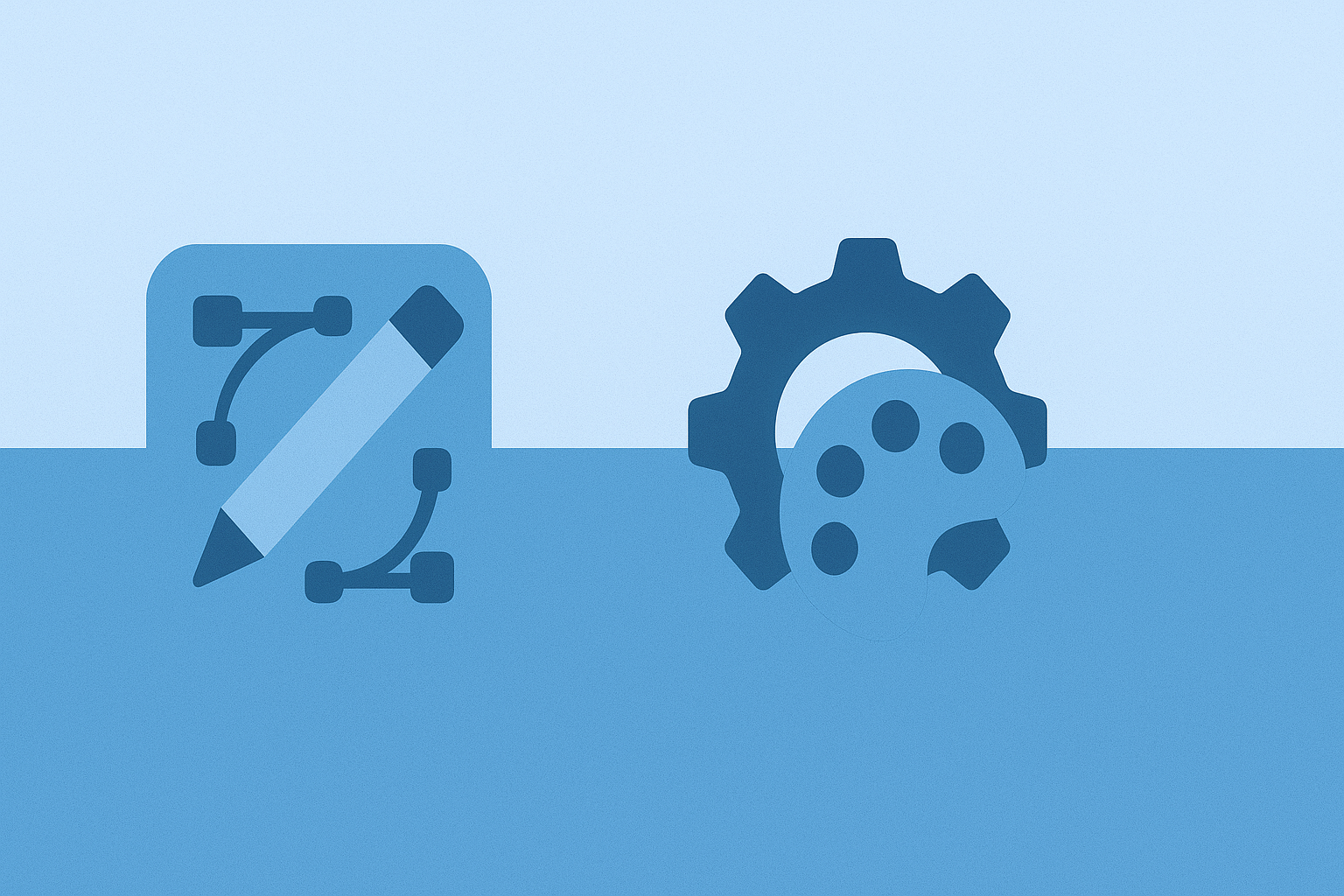A huge obstacle that brilliant ideas face is mapping. Poor project management results in wasting 11.4% of total investments, so organizations invariably look for paths to defeat the threat of money losses. The agile method for project delivery arose over a decade ago and became remarkably widespread, with 53% of innovative companies declaring practicing it. Yet, its implementation requires outlining tools, one of which is a roadmap. In this article, we’ll teach how to develop a product roadmap and advise useful software.
What is a product roadmap?
A roadmap is a visualized flow of strategic goals accomplishment that is enhanced with completion deadlines. With the popularization of the agile approach, roadmaps have become on-hand tools and are now used for the following primary objectives:
- to outline the production stages and their interrelation (product roadmap)
- to schematize market segments or niches developing
- to present corporate growth plans and KPIs distribution over time
- to manage technologies’ evolution routes (versions)
- to schedule employees’ training.
Product roadmaps are, apparently, the most utilized types from the above mentioned, as far as they support transforming a vision into a ready-to-use and easy-to-manage performance plan. The idea is to decompose the goal within 4 dimensions: themes, epics, stories, and features.
- Themes
These are TOP-level frames that are grouped in accordance with the desired output characteristics. Say, your team has to produce an e-commerce website from a scratch. A shopping site is a complex product – you have to carefully think over front-end and back-end, as well as content and payment system integration. Commonly, 5 notable matters are to be covered:
- in-person using – making sure visitors will be able to interact with the website: create an account, save items to wishlists, see searching history, etc.
- performance on mobile – developing applications for iOS and Android devices, integration with social media and mobile payment systems
- e-commerce features – creating the system for e-purchasing and money transfer, that will be in compliance with local and international related legislation
- UI convenience – tracking and improving navigation and on-site search, integrating the support system
- content updates – iterating database with selling units, automation of prices’ adjusting, updates dumps.
All of these will obviously presume a lot of separate tasks that may, however, intersect – at some point. To handle job completion and observe the broad picture, you may create the roadmap in the context of 5 themes – self-service, mobile, webstore, help desk, and overall infrastructure.
“Product roadmap example”, source
2. Epics
Every theme contains groups of tasks – epics. These can occur simultaneously or follow one another – with or without intersection.
Epics represent precise stages of creating a definite piece of the desired product’s quality. For example, to make sure your e-commerce website is thoroughly equipped with a “Help desk”, your team may consider the next features:
- a help bot
- native navigation
- accessibility
- a search option.
After you’ve determined epics within every single theme, you may predict what kind of specialist will be required to deliver the product. And no less important – to calculate required working hours, hence, overall labor costs.
3. Stories
A story is a subset of a product, theme, or epic. It describes minor units of tasks that are not included in the visual part of a roadmap. Stories are used in some stages of product development and may include cross-team inputs and insights, “How to..” comments, notes, and others.
4. Features
Features are sort of benchmarks or general guidelines for product development, that may occur at any stage of the process. For instance, in the print-on-demand business, you need a design first before producing custom merchandise.
The product roadmap is used to determine a release plan and manage the backlog. These 3 are important sources of information for a number of internal and external company’s stakeholders:
- investors and shareholders – to anticipate advantages and predict ROI
- management – to estimate profits, develop individual KPIs, and handle operational and financial risks
- production team – to manage collective efforts, distribute time, and share project-related data with one another
- sales team – to forecast revenues and build responsive sales funnels
- HR managers – to plan personnel and come up with hiring on time.
The product roadmap depends on the planning level and audience for which it is being developed. For C-level executives and investors, a more generalized plan is preferable, while the developers’ team will require a fairly detailed one.
How to build a product roadmap?
To know how to roadmap a product, one needs to operate three inputs:
- Product concept
It is important that the product you are going to deliver is in line with both customers’ needs and your company’s long-term strategic goals. Without comprehending what the product should be, what audiences it shall target, and what is a production break-even point, the attempt to build a roadmap unmistakably breaks.
To work out the concept, a series of strategic sessions are normally carried out. After ideation and research stages, TOP-level internal stakeholders, such as CEO, COO, CMO-s, CFO-s, Sales VPs, Product Owners, hollow an idea and detail the strategy, tactics, and performance metrics.
- Roadmap users
Not to create a useless scheme, one shall design a roadmap with an eye on the needs and expectations of those who will interpret it. In fact, a product requires several roadmaps to be prepared, so that each audience will receive the document in an acceptable language. Product roadmaps for developers and sales managers will differ, agree. Nevertheless, customized documents shouldn’t contradict each other, so it’s the author’s significant liability to create logical plans.
- Planning timelines
Although some people question the necessity of strict deadlines, most agree that they are essential when composing a roadmap. Think of the most appropriate sessions’ duration and split the flow into weeks, months, or quarters. You shall neither be too specific nor too long-term concentrated. The business environment changes fast now, so be ready that the original document’s version will be adjusted, by all means.
Here are few approaches of how to create a product roadmap that will work:
- apply a top-down planning
In Epistemology this approach is called deductive or movement from general to particular.
“Make sure your different-level production plans follows one another”, source
While developing themes and epics, grasp the broad idea in mind. It is crucial to concentrate on “where do we want to get” rather than “how we shall get there”. Otherwise, you run the risk of changing goals because of resources, rather than adjusting resources to get the aspired result.
More general goals are usually wordy and “foreseeing”, while more specific ones are set in line with the AIDA principle. Here are few examples of strategic & more specific goals’ pairs:
- Expand over new GEOs → Develop product versions in English and Portuguese
- Increase site’s usability → Increase LCP and FID core web vitals
- Redesign Pricing strategy → Begin personal discounts system based on purchasing history
- Increase sales → Expand the distribution network.
“General goals are transformed into specific tactical objectives”, source
Of course, every strategic goal is expressed via a set of subgoals, while individual subgoals may be drawn with few other tasks, and so on and so forth.
- implement different planning for start-ups and mature companies
Central distinctive features of startups are the quick decision-making process, permanent changes in organizational structure, and internal processes’ volatility. In this case, it may seem that composing long-term plans is a waste of time. But, in fact, these are something that helps a company to stay on course, and owners or employees – to keep the motivation and engagement.
As soon as startups usually produce innovative and first-of-a-kind products, certain conceptualization stages, such as peers’ analysis, are nearly impossible to carry. Time is one of the biggest assets and competitive advantage, hence, young companies are advised not to overdue 6-12 months planning horizon.
Solid corporations are by far more predictable in terms of revenues, however, they spend much more effort on plans’ consolidation. This is fair for multinationals with extensive brands’ portfolios, and industrial conglomerates. Transferring product vision and goals into the roadmap, hence, takes months or even years. Once approved, strategic documents cease to be flexible and adjustable – pretty much at all.
- use decent visualization
Brief plans normally consume more effort, than extensive ones. Roadmaps are beloved for the visibility and ease of perception, but to achieve these, one has to try hard with design:
- use color gradients
The color allows to show objects’ interrelation or distinguish these from one another. Remember, that colors are sort of a markup – they have to reinforce logic, not contradict it. Select different color pallets for separate object groups. For example, the ones that Atlassian suggests: project, status, co-workers, components, and labels.
- use bars instead of lines
If processes intersect or overlap, bars will better display this dependence than flat lines.
- use large fonts
Don’t try to frame a dozen-page report within a single-page roadmap by using microscopic letters and footnotes. Use 2-3 words to write inscriptions over themes and epics and avoid calligraphic or fantasy fonts.
“Give preference to clean and neat fonts”, source
Product roadmap software
Programs make regular routine tasks much easier, so if your team struggles on how to develop a product roadmap – pay attention to the TOP-5 helpful software:
- Weje
This is a team-collaborative tool that allows delivering tasks within a single cloud-based environment. Create an online whiteboard, and share access with your co-workers. Schedule offline meetings or calls- to discuss the product roadmap example. Assemble inputs from colleagues, releases documentation, and whatever important data from the Web – within a single workspace.
“Use online workspace from Weje to have all information in place”, source
You can also use a mind maps making tool – to easily establish interrelations between the roadmap’s elements.
- Confluence
With Atlassian, you’ll be able to create either regular or advanced roadmaps within the Jira environment. The latter allows aligning different teams’ efforts, hence, is particularly suitable for software development companies. The cool thing about Jira roadmaps is dependencies’ and resources’ tracking tools. Therefore, one can timely envision if a team has enough resources to accomplish the assigned task.
“Use Jira roadmaps to elaborate agile tasks”, source
- ProductPlan
The software is great because it gives a product roadmap template even without purchasing the license. However, with the paid plan you can access advanced planning tools, REST API, and an extensive library of training. The process of roadmap creation is very simple – just drag and drop separate bars, and share different versions of a roadmap with various audiences.
- Roadmunk
The program’s distinctive feature is automated customers’ feedback handling. With the Chrome extension, the feedback is instantly collected and sent to the production team, which allows adjusting plans in close to real-time mode. Roadmunk offers prioritization templates and built-in scoring frameworks. Additional features cover:
- Integration with Jira
- Swimlane road mapping
- Multiple views
- Exporting options.
- Craft.io
This program targets enterprises and provides built-in management tools and a 360-degree view of tasks’ progressing. Craft.io has a straightforward interface, for example, you can overview 2 or more releases dashboards at once and transfer data in-between. Also, it’s easy to switch between different layouts: gridlines, presentation, and full screen, as well as add participants at any time.
Wrapping up
A well-designed product roadmap reconciles the irreconcilable – it is simple and detailed, simultaneously. Whichever template or software you use, it’s essential for the document to be easily understandable by whom it’ll be viewed and read. Although this is a strategy-level document, the best you can do with the roadmap – frame it with timing and enhance it with shifts for flexibility and adjustment.
Published: June 1, 2021





